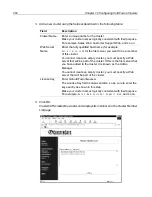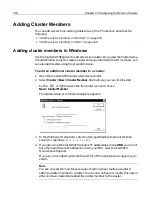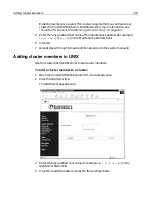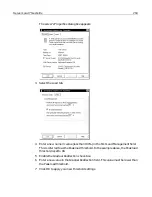
276
Chapter 12 Configuring ColdFusion Clusters
9
To change the Peak load threshold, enter a new numeric value (less than 100%) in
the Standard Load Threshold field.
10 Enable the Gradual Redirection check box if it is not already enabled.
11 To change the Gradual Redirection load threshold, enter a new numeric value in
the Gradual Load Threshold field. This value must be lower than the Standard
Load Threshold.
12 Click OK to apply your new load threshold settings.
Session-Aware Load Balancing
Managing your Web application’s state in a clustered environment can be
challenging. By default, Web application, session, and server variables that get stored
in memory or a repository during a user session are not persisted during a server
redirection. Consequently, the Web server cannot maintain the application’s state
correctly.
To overcome this problem, ClusterCATS provides a session-aware load balancing
feature that lets you maintain application state in a clustered environment.
One method for maintaining your ColdFusion Web application’s state is to create
session variables that get stored on the Web server. For an e-commerce Web site that
is clustered, it is vital that users do not get redirected to another server in the middle
of their session. If they did, their online transactions would be interrupted, making
for an unsuccessful and frustrating user experience.
To ensure that users are not redirected from the server on which they start their
session, ClusterCATS provides a built-in feature for enabling session-aware load
balancing. Sometimes referred to as a “sticky” server, session-aware load balancing
guarantees that users will not get bumped from the server on which they start their
session until the session is complete, regardless of the load thresholds that have been
defined for that server.
Note
Session-aware load balancing may not work if you use absolute hyperlinks in your
Web pages. Absolute links route the HTTP request back to the cluster entry point and
redirect according to the current load threshold without regard to the state of the
requesting client. To avoid this inadvertent loss of state, be sure to use only relative
linking in your Web pages.
This section describes the following:
•
“Enabling session-aware load balancing on Windows” on page 277
•
“Enabling session-aware load balancing on UNIX” on page 278
Summary of Contents for COLDFUSION 5-ADVANCED ADMINISTRATION
Page 1: ...Macromedia Incorporated Advanced ColdFusion Administration ColdFusion 5...
Page 20: ......
Page 56: ...38 Chapter 1 Advanced Data Source Management...
Page 74: ...56 Chapter 2 Administrator Tools...
Page 76: ......
Page 86: ...68 Chapter 3 ColdFusion Security...
Page 87: ...To Learn More About Security 69...
Page 88: ...70 Chapter 3 ColdFusion Security...
Page 130: ...112 Chapter 5 Configuring Advanced Security...
Page 132: ......
Page 154: ...136 Chapter 6 Configuring Verity K2 Server...
Page 162: ...144 Chapter 7 Indexing XML Documents...
Page 202: ...184 Chapter 8 Verity Spider...
Page 236: ...218 Chapter 10 Verity Troubleshooting Utilities...
Page 238: ......
Page 348: ...330 Chapter 14 ClusterCATS Utilities...
Page 349: ...Using sniff 331...
Page 350: ...332 Chapter 14 ClusterCATS Utilities...
Page 362: ...344 Chapter 15 Optimizing ClusterCATS...
Page 372: ...354 Index...
















































